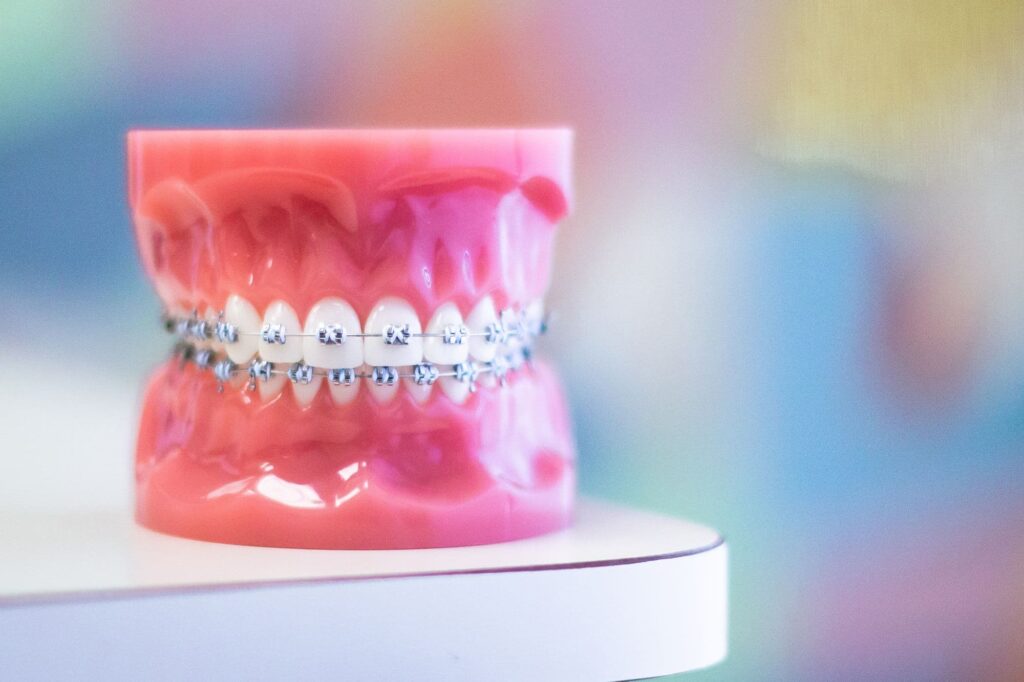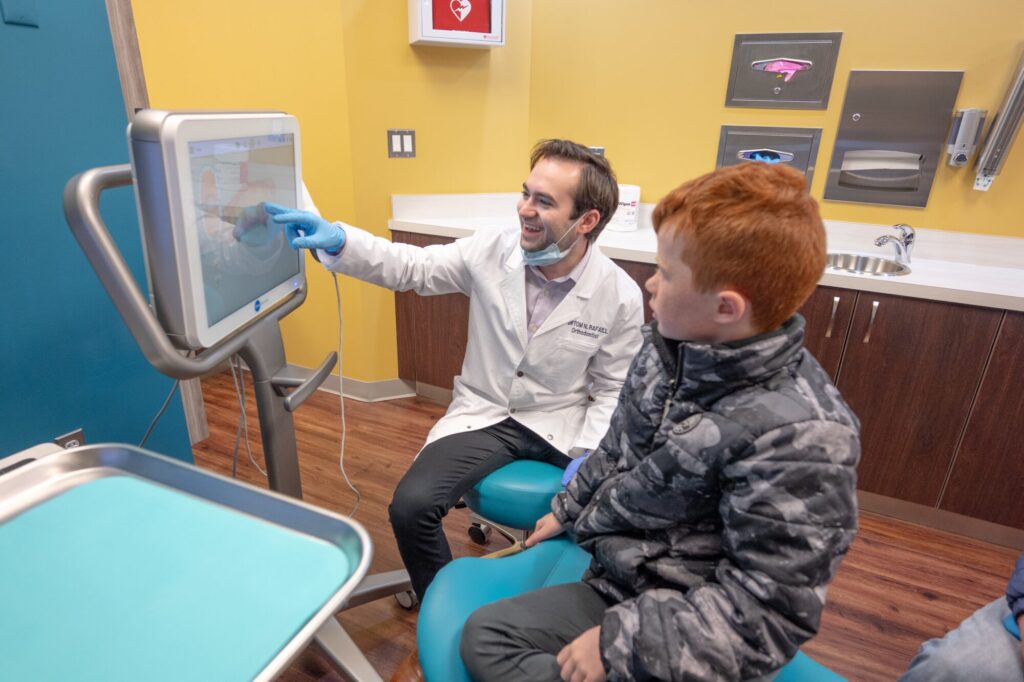While braces are common, information about them isn’t necessarily common knowledge. Today, Straight Smiles Orthodontics is going to give you a rundown on how they work, and answer: What are the main elements of braces?
The Components of Traditional Braces
Braces are traditionally made up of a few essential components that work together to align the teeth and can be tailored to an individual’s treatment plan.
- Brackets: Braces are made of small brackets affixed to each tooth using a specialized adhesive, serving as anchors for other components.
- Archwires: These wires, typically crafted from stainless steel or nickel-titanium, link the brackets and play a pivotal role in the alignment process. They exert pressure on the brackets and teeth, gradually shifting them as directed by our orthodontists.
- Elastic Bands: Also known as O-rings, these bands secure the archwire to the brackets. They come in a variety of colors, a popular choice among younger patients.
- Springs: In certain cases, springs may be incorporated to provide additional force for tooth movement, tailored to the patient’s needs. Positioned on the archwire between brackets, they apply pressure to facilitate desired shifts.
Are Braces Right For Me?
During a consultation regarding braces, Dr. Tom or Dr. Nicholas Rafail will meticulously assess your individual circumstances and develop a customized treatment plan tailored to your unique needs, regardless of whether you are a child, adolescent, or adult (with certain treatment variations based on age). Here are several reasons why we may recommend braces for you or your child:
- Crowded Teeth: Crowded teeth, akin to an overstuffed elevator, occur when there isn’t adequate space in the jaws, causing teeth to lose proper alignment. This can lead to teeth overlapping or becoming crooked, presenting challenges for oral hygiene maintenance.
- Aesthetic Concerns: Braces aren’t limited to addressing orthodontic issues; they can also enhance appearance. They serve as a solution for improving smile aesthetics and boosting confidence.
- Spacing Issues: Natural gaps or spaces between teeth can develop. Braces are commonly used to close these gaps, achieving a more uniform and attractive smile.
- Malocclusion: Malocclusion refers to an incorrect alignment of the teeth or a mismatch between the upper and lower jaws. This can take the form of an overbite, underbite, crossbite, or open bite, resulting in functional and aesthetic difficulties.
- Jaw Problems: Orthodontic treatment can address jaw misalignment issues, potentially alleviating problems such as TMJ (Temporomandibular Joint) disorder.
- Oral Health: Properly aligned teeth are easier to clean, reducing the risk of dental issues like tooth decay and gum disease. Therefore, braces serve as a preventive measure for maintaining optimal oral health.
Braces Are A Commitment
At our offices, regular appointments are scheduled to adjust your braces and maintain their optimal condition, playing a crucial role in your treatment journey. During these visits, we may replace the archwire, adjust elastic bands, or address any necessary repairs. It’s vital to be punctual for these check-ups.
Remember, the duration of treatment varies for each individual, so patience and consistency in your at-home maintenance routine are essential. Excellent oral hygiene is paramount for successful alignment. Our team will provide comprehensive care instructions, including dietary guidelines to prevent damage to your braces.
Choosing Your Appliance
Now that we’ve covered the basics of traditional braces let’s explore the range of options available at our office! In addition to traditional braces, we offer alternatives such as clear aligners.
- Metal braces are often our primary choice for young children, but they are equally dependable for adult patients, with treatment durations averaging around 18-22 months.
- Clear braces fulfill the same purpose as metal braces but feature brackets that blend better with the teeth due to their polycrystalline ceramic material.
- We proudly offer Invisalign and ClearCorrect, popular removable appliances typically recommended for adults and teenagers. These options are the most discreet for straightening teeth. Treatment durations typically range from eight to 20 months, with a new set of aligners worn every one to two weeks to guide teeth into their new positions.
- Retainers typically serve as the final step in orthodontic treatment, ensuring your new smile remains unchanged for longer.
Braces represent a partnership between you and your orthodontist! We’re here to address any questions or concerns you may have throughout your journey, ensuring you achieve a stunning new smile at the finish line! To discover more, feel free to contact one of our amazing offices: Shelby Township (586-884-0795), Novi (248-926-0601), and Rochester Hills (248-963-0080).
 Free Consult
Free Consult



